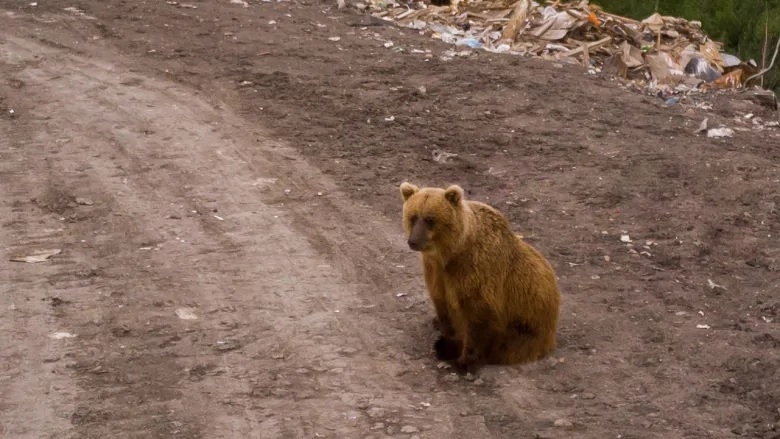Rules around wildlife photography in Canada’s Northwest Territories news to local photographer

A photographer from Inuvik, N.W.T., got an unexpected phone call soon after recently using his drone to make a video of a grizzly bear and cubs near the community.
After posting the video online, Kristian Binder said he got a call from the N.W.T. Department of Environment and Natural Resources, and it came with a warning.
“[They] knew that I have the business and they were warning me about possible commercial usage,” said Binder, who runs Eighty One Images, where he puts photos he’s taken on calendars, leggings, mugs and more.
Under regulations established in the territory’s Wildlife Act in 2014, anyone who wants to take photos of wildlife for commercial use in the N.W.T. must apply for a wildlife observation permit.
Binder said he was completely unaware of the regulations surrounding wildlife photography.
“It definitely needs to be put out there because I really had no idea,” Binder said.
“This wasn’t me playing stupid on it. I just never ever thought that taking photos of wildlife around here would be something that is regulated.”
He ended up having a meeting with people from the department to get more clarity on the situation.
Concerns of harassment
Binder said there were also concerns that his drone could have been too close to the bears, essentially harassing them.
“That wasn’t what I was doing,” Binder said, adding that he had a good zoom and angle that made it appear the drone was closer than it actually was.
The department also asked Binder to stay away from the landfill with the drone, where the bears are frequenting, he said.
“They didn’t want the bears to be normalized to the drone because they are already comfortable being around in town.”
Rob Gau, manager for biodiversity conservation with the environment department, said that regardless of drone use, people need to always be aware of the regulations of the Wildlife Act.
“Anything for profit, whether it be just going out and watching wildlife, big game species, or going out filming … requires a wildlife observation permit.”
Gau also said it’s illegal to harass wildlife, and “if the animal knows you’re there, you’re too close.”
Binder said he hasn’t done much wildlife photography but he hopes to change that. He’s applying for his wildlife observation permit, which could take a couple of months.
He’s hoping to have the permit approved in time to use his photos for his 2020 calendar.
Related stories from around the North:
Canada: Tourism agency for Canada’s Northwest Territories says more work coming for local photographers, CBC News
Finland: Photographer tells how he snapped picture of rare white bear cub in Finland, Yle News
Sweden: Moose migration in northern Sweden makes for “contemplative” slow TV, Radio Sweden



